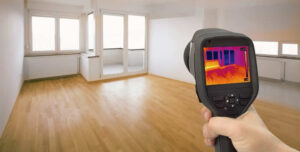How to Check If Your Residence Has a Hidden Leakage
How to Check If Your Residence Has a Hidden Leakage
Blog Article
Right here down the page you might get lots of amazing details around Leaking water lines.

Early discovery of dripping water lines can alleviate a possible calamity. Some little water leakages may not be visible.
1. Take A Look At the Water Meter
Every house has a water meter. Inspecting it is a surefire way that aids you discover leakages. For starters, shut off all the water resources. Guarantee no person will flush, utilize the tap, shower, run the cleaning device or dish washer. From there, go to the meter as well as watch if it will certainly transform. Since nobody is using it, there ought to be no movements. If it relocates, that suggests a fast-moving leakage. Similarly, if you detect no changes, wait a hr or two as well as inspect back once more. This implies you may have a sluggish leakage that might also be below ground.
2. Examine Water Consumption
Evaluate your water bills as well as track your water consumption. As the one paying it, you ought to discover if there are any type of disparities. If you detect sudden changes, regardless of your intake coinciding, it indicates that you have leaks in your plumbing system. Keep in mind, your water bill ought to fall under the same range every month. A sudden spike in your costs shows a fast-moving leak.
Meanwhile, a constant rise each month, despite the same habits, reveals you have a sluggish leak that's additionally slowly escalating. Call a plumber to thoroughly inspect your residential property, particularly if you feel a cozy area on your flooring with piping underneath.
3. Do a Food Coloring Examination
When it pertains to water consumption, 30% originates from toilets. Examination to see if they are running correctly. Decline specks of food shade in the tank and also wait 10 minutes. If the shade in some way infiltrates your bowl throughout that time without flushing, there's a leak in between the tank and also dish.
4. Asses Outside Lines
Don't fail to remember to inspect your exterior water lines also. Should water seep out of the connection, you have a loose rubber gasket. One small leak can lose bunches of water and spike your water bill.
5. Inspect and Evaluate the Circumstance
Home owners need to make it a habit to check under the sink counters and also inside closets for any kind of bad odor or mold and mildew development. These two red flags indicate a leak so punctual focus is needed. Doing regular assessments, even bi-annually, can save you from a major trouble.
Check for stainings and damaging as a lot of devices and pipelines have a life expectancy. If you presume dripping water lines in your plumbing system, don't wait for it to rise.
Early detection of dripping water lines can mitigate a prospective disaster. Some small water leakages may not be noticeable. Checking it is a guaranteed way that assists you uncover leakages. One small leakage can waste heaps of water and surge your water costs.
If you suspect dripping water lines in your plumbing system, do not wait for it to escalate.
WARNING SIGNS OF WATER LEAKAGE BEHIND THE WALL
PERSISTENT MUSTY ODORS
As water slowly drips from a leaky pipe inside the wall, flooring and sheetrock stay damp and develop an odor similar to wet cardboard. It generates a musty smell that can help you find hidden leaks.
MOLD IN UNUSUAL AREAS
Mold usually grows in wet areas like kitchens, baths and laundry rooms. If you spot the stuff on walls or baseboards in other rooms of the house, it’s a good indicator of undetected water leaks.
STAINS THAT GROW
When mold thrives around a leaky pipe, it sometimes takes hold on the inside surface of the affected wall. A growing stain on otherwise clean sheetrock is often your sign of a hidden plumbing problem.
PEELING OR BUBBLING WALLPAPER / PAINT
This clue is easy to miss in rooms that don’t get much use. When you see wallpaper separating along seams or paint bubbling or flaking off the wall, blame sheetrock that stays wet because of an undetected leak.
BUCKLED CEILINGS AND STAINED FLOORS
If ceilings or floors in bathrooms, kitchens or laundry areas develop structural problems, don’t rule out constant damp inside the walls. Wet sheetrock can affect adjacent framing, flooring and ceilings.
https://www.servicemasterbyzaba.com/blog/how-to-detect-water-leakage-in-walls/

We were made aware of that write-up about Leaking water lines through an associate on a different blog. Sharing is caring. You won't know, you may just be helping someone out. Many thanks for your time. Don't hesitate to check our website back soon.
Report this page